 Technology peripherals
Technology peripherals
 AI
AI
 Watch 'Harry Potter' in one sitting: AI large model 'Quantum Speed Reading', one minute is equivalent to five human hours
Watch 'Harry Potter' in one sitting: AI large model 'Quantum Speed Reading', one minute is equivalent to five human hours
Watch 'Harry Potter' in one sitting: AI large model 'Quantum Speed Reading', one minute is equivalent to five human hours
In recent times, OpenAI has been the most watched research institution with its GPT series models and ChatGPT. But in the past two years, an AI start-up company is coming into everyone's field of vision. This company is called Anthropic. It was founded in 2021. It focuses on developing general AI systems and language models, and adheres to the concept of responsible AI use.
I wonder if you still remember the collective resignation of OpenAI’s core employees at the end of 2020. At that time, this incident caused quite a stir in the AI circle. Anthropic was created by these departed personnel, including Dario Amodei, former vice president of research at OpenAI, Tom Brown, the first author of the GPT-3 paper, and others.
Anthropic had raised more than $700 million in funding in January, with its latest round valuing it at $5 billion. At the same time, two months after the release of ChatGPT, the company quickly developed Claude, an artificial intelligence system that benchmarked its old club ChatGPT.
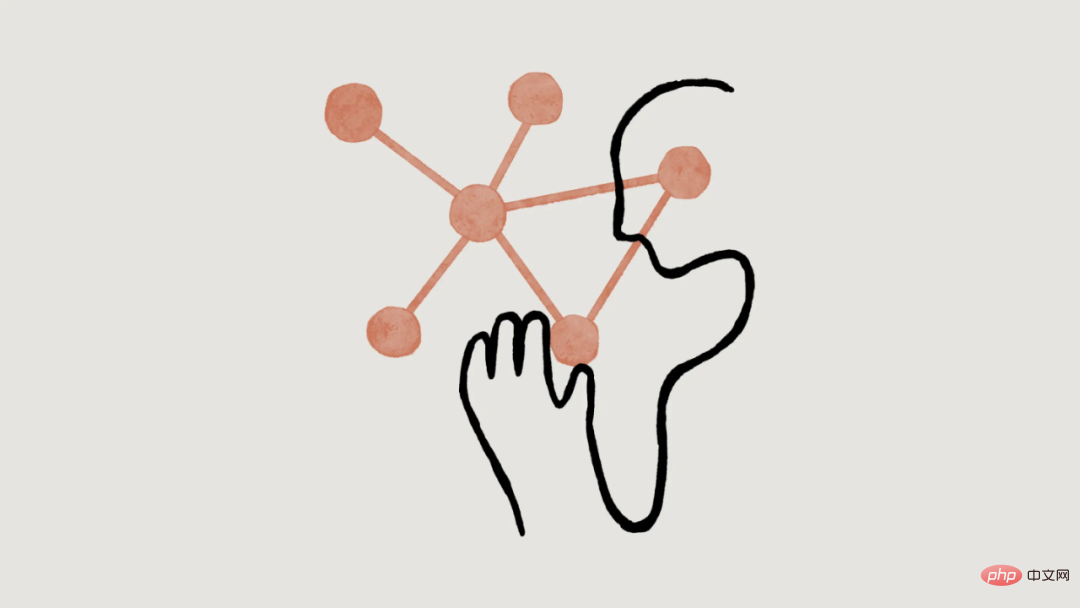
Claude application access address: https://www.anthropic.com/earlyaccess
Claude uses a mechanism called "constitutional AI" developed by Anthropic itself, which aims to provide a "principles-based" approach to align AI systems with human intentions.
Claude can complete tasks such as summarizing, searching, assisting in creation, Q&A, and coding. Based on user feedback, Claude is less likely to generate harmful output, easier to carry on conversations, and easier to control. In addition to this, Claude can set his personality, tone and behavior based on instructions.

However, Anthropic did not provide many technical details about Claude, but described Claude in the paper "Constitutional AI: Harmlessness from AI Feedback" Interested readers can check out the technology behind it.
Paper address: https://arxiv.org/pdf/2212.08073.pdf
Back in January , some researchers tested the maximum amount of text that Claude can process at one time, showing that Claude can recall information in 8k tokens.
Not long after this, Anthropic launched 100K Context Windows on Thursday, It expanded Claude’s context window from 9k tokens to 100k, which is equivalent to 75,000 words. This means businesses can submit hundreds of pages of material for Claude to digest and interpret, and conversations with him can last for hours or even days. 100K context windows are now accessible via the Anthropic API.
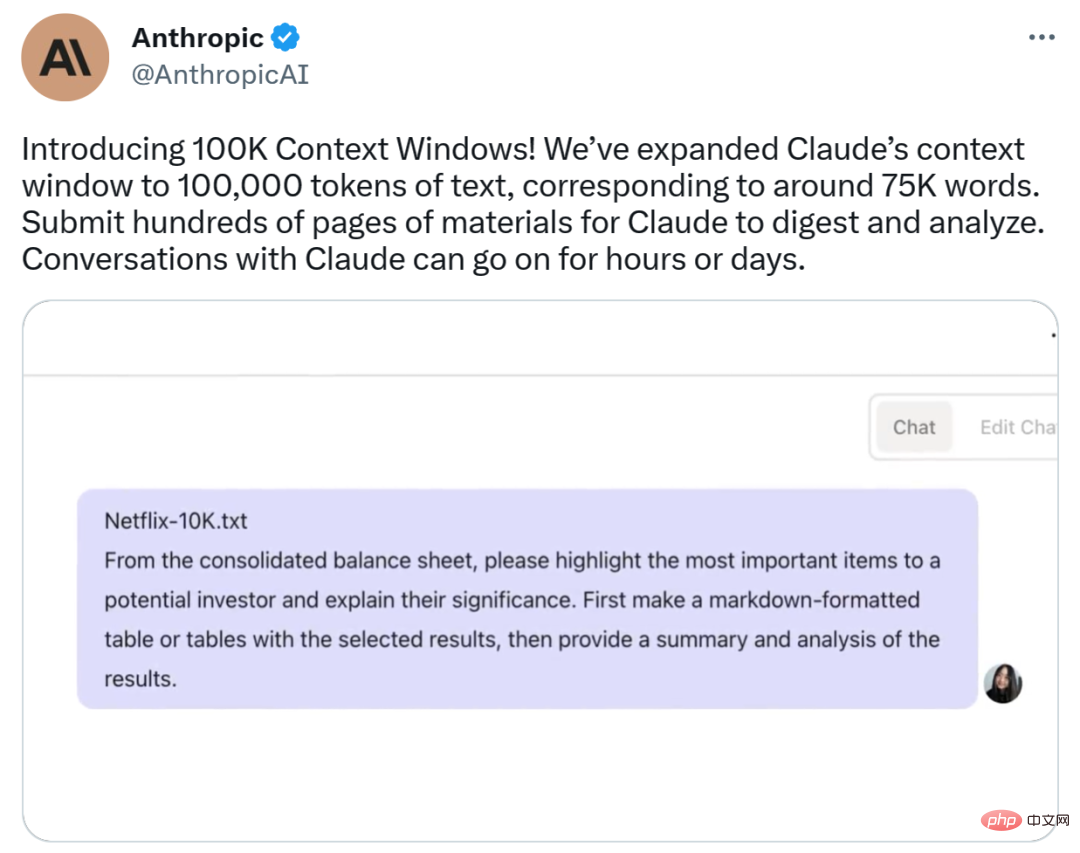
We know that the more advanced the large model, the longer the text that can be processed at the same time. What is the concept of 75,000 words? It's probably equivalent to summarizing the first part of "Harry Potter" in one click.
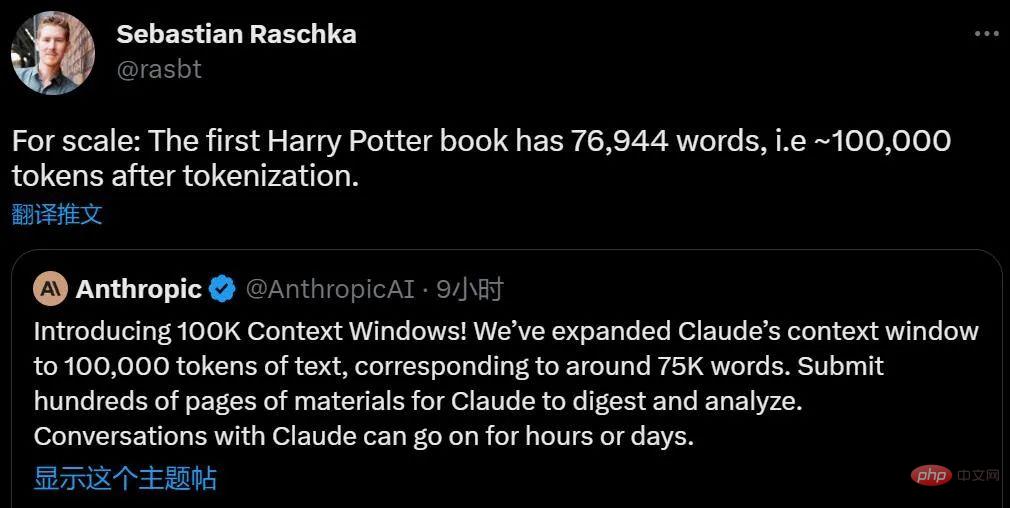
Looks like most essays, news reports, and short stories are out of the question.
Claude Evolves Again: True "AI Quantum Speed Reading"
According to scientific research, ordinary people can read 100,000 tokens in about 5 hours, and may It takes longer to digest, remember and analyze this information. Now Claude can do this in less than 1 minute.

General calculations for context windows.
Anthropic first loaded the entire text of "The Great Gatsby" into Claude-Instant (72 K tokens, Claude has two versions Claude and Claude Instant, Claude is the most advanced high-performance model, and Claude Instant is a lighter, cheaper, faster option.), and modified the line "Mr. Carraway is a software engineer working on machine learning at Anthropic." When Anthropic asked the model to find differences from the original text, it gave the correct answer in 22 seconds.
In addition to reading long texts, Claude also helps in retrieving information from documents, thereby benefiting business operations. Users can drop multiple documents or even a book into prompt and then ask Claude a question (requiring comprehensive knowledge analysis of many parts of the text). For complex problems, this may be much more efficient than vector search-based methods. Claude can follow the user's instructions and return the information they are searching for, just like a human assistant.
Anthropic then puts the large language integration tool LangChain API developer documentation (240 page) into the model, and then responds to the questions asked A LangChain demo using the Anthropic language model is given.
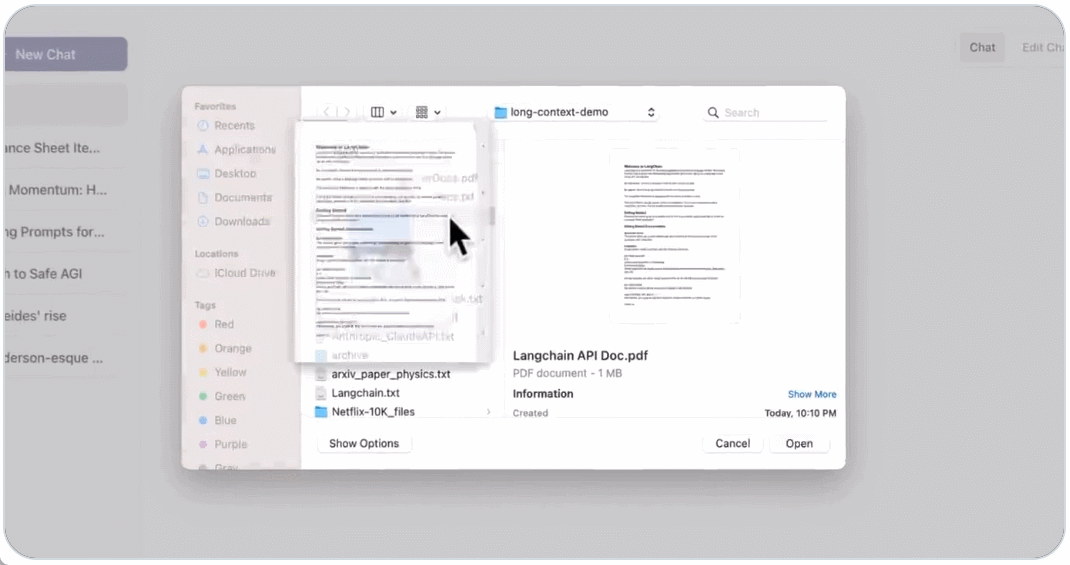
Meanwhile, 100k tokens can be converted into about 6 hours of audio. AssemblyAI did a great demonstration of this by transcribing a long podcast into almost 58k words and then using Claude for summary summarization and Q&A.
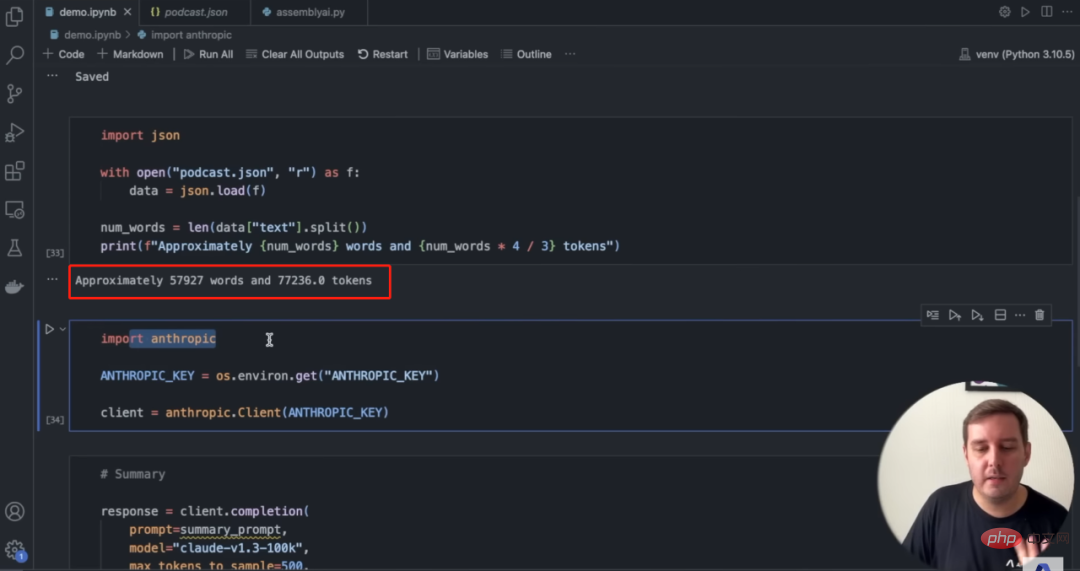
##Source: AssemblyAI
##In short , using 100k context windows, users can do the following:
- Digest, summarize and interpret dense documents such as financial statements or research papers;
- Analyze strategic risks and opportunities based on company annual reports;
- Assess the pros and cons of a piece of legislation;
- Identify risks in legal documents , topics, and different forms of arguments;
- Read hundreds of pages of developer documentation and give answers to technical questions;
- Passed Put your entire codebase into context and build or modify intelligently for rapid prototyping.
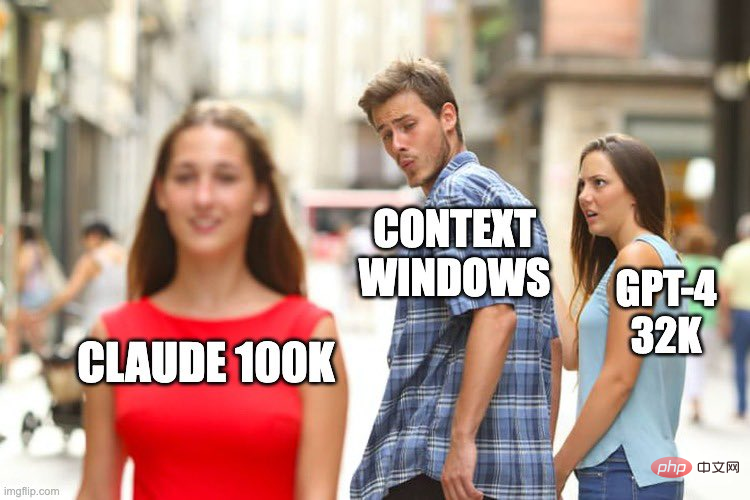
Source: Twitter @nathanwchan
As for the price, Anthropic technician Ben Mann said that the million-token price of 100K Context Windows is the same as previous models.

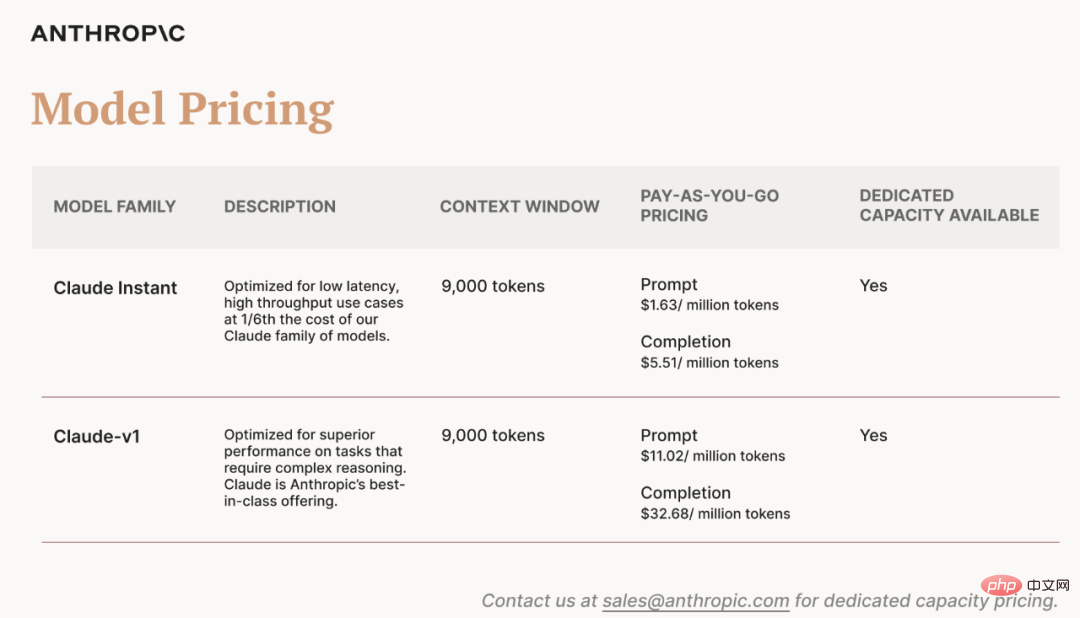
The above is the detailed content of Watch 'Harry Potter' in one sitting: AI large model 'Quantum Speed Reading', one minute is equivalent to five human hours. For more information, please follow other related articles on the PHP Chinese website!

Hot AI Tools

Undresser.AI Undress
AI-powered app for creating realistic nude photos

AI Clothes Remover
Online AI tool for removing clothes from photos.

Undress AI Tool
Undress images for free

Clothoff.io
AI clothes remover

AI Hentai Generator
Generate AI Hentai for free.

Hot Article

Hot Tools

Notepad++7.3.1
Easy-to-use and free code editor

SublimeText3 Chinese version
Chinese version, very easy to use

Zend Studio 13.0.1
Powerful PHP integrated development environment

Dreamweaver CS6
Visual web development tools

SublimeText3 Mac version
God-level code editing software (SublimeText3)

Hot Topics
 1377
1377
 52
52
 How to create an oracle database How to create an oracle database
Apr 11, 2025 pm 02:33 PM
How to create an oracle database How to create an oracle database
Apr 11, 2025 pm 02:33 PM
Creating an Oracle database is not easy, you need to understand the underlying mechanism. 1. You need to understand the concepts of database and Oracle DBMS; 2. Master the core concepts such as SID, CDB (container database), PDB (pluggable database); 3. Use SQL*Plus to create CDB, and then create PDB, you need to specify parameters such as size, number of data files, and paths; 4. Advanced applications need to adjust the character set, memory and other parameters, and perform performance tuning; 5. Pay attention to disk space, permissions and parameter settings, and continuously monitor and optimize database performance. Only by mastering it skillfully requires continuous practice can you truly understand the creation and management of Oracle databases.
 How to create oracle database How to create oracle database
Apr 11, 2025 pm 02:36 PM
How to create oracle database How to create oracle database
Apr 11, 2025 pm 02:36 PM
To create an Oracle database, the common method is to use the dbca graphical tool. The steps are as follows: 1. Use the dbca tool to set the dbName to specify the database name; 2. Set sysPassword and systemPassword to strong passwords; 3. Set characterSet and nationalCharacterSet to AL32UTF8; 4. Set memorySize and tablespaceSize to adjust according to actual needs; 5. Specify the logFile path. Advanced methods are created manually using SQL commands, but are more complex and prone to errors. Pay attention to password strength, character set selection, tablespace size and memory
 How to write oracle database statements
Apr 11, 2025 pm 02:42 PM
How to write oracle database statements
Apr 11, 2025 pm 02:42 PM
The core of Oracle SQL statements is SELECT, INSERT, UPDATE and DELETE, as well as the flexible application of various clauses. It is crucial to understand the execution mechanism behind the statement, such as index optimization. Advanced usages include subqueries, connection queries, analysis functions, and PL/SQL. Common errors include syntax errors, performance issues, and data consistency issues. Performance optimization best practices involve using appropriate indexes, avoiding SELECT *, optimizing WHERE clauses, and using bound variables. Mastering Oracle SQL requires practice, including code writing, debugging, thinking and understanding the underlying mechanisms.
 How to add, modify and delete MySQL data table field operation guide
Apr 11, 2025 pm 05:42 PM
How to add, modify and delete MySQL data table field operation guide
Apr 11, 2025 pm 05:42 PM
Field operation guide in MySQL: Add, modify, and delete fields. Add field: ALTER TABLE table_name ADD column_name data_type [NOT NULL] [DEFAULT default_value] [PRIMARY KEY] [AUTO_INCREMENT] Modify field: ALTER TABLE table_name MODIFY column_name data_type [NOT NULL] [DEFAULT default_value] [PRIMARY KEY]
 What are the integrity constraints of oracle database tables?
Apr 11, 2025 pm 03:42 PM
What are the integrity constraints of oracle database tables?
Apr 11, 2025 pm 03:42 PM
The integrity constraints of Oracle databases can ensure data accuracy, including: NOT NULL: null values are prohibited; UNIQUE: guarantee uniqueness, allowing a single NULL value; PRIMARY KEY: primary key constraint, strengthen UNIQUE, and prohibit NULL values; FOREIGN KEY: maintain relationships between tables, foreign keys refer to primary table primary keys; CHECK: limit column values according to conditions.
 Detailed explanation of nested query instances in MySQL database
Apr 11, 2025 pm 05:48 PM
Detailed explanation of nested query instances in MySQL database
Apr 11, 2025 pm 05:48 PM
Nested queries are a way to include another query in one query. They are mainly used to retrieve data that meets complex conditions, associate multiple tables, and calculate summary values or statistical information. Examples include finding employees above average wages, finding orders for a specific category, and calculating the total order volume for each product. When writing nested queries, you need to follow: write subqueries, write their results to outer queries (referenced with alias or AS clauses), and optimize query performance (using indexes).
 How to configure Debian Apache log format
Apr 12, 2025 pm 11:30 PM
How to configure Debian Apache log format
Apr 12, 2025 pm 11:30 PM
This article describes how to customize Apache's log format on Debian systems. The following steps will guide you through the configuration process: Step 1: Access the Apache configuration file The main Apache configuration file of the Debian system is usually located in /etc/apache2/apache2.conf or /etc/apache2/httpd.conf. Open the configuration file with root permissions using the following command: sudonano/etc/apache2/apache2.conf or sudonano/etc/apache2/httpd.conf Step 2: Define custom log formats to find or
 What does oracle do
Apr 11, 2025 pm 06:06 PM
What does oracle do
Apr 11, 2025 pm 06:06 PM
Oracle is the world's largest database management system (DBMS) software company. Its main products include the following functions: relational database management system (Oracle database) development tools (Oracle APEX, Oracle Visual Builder) middleware (Oracle WebLogic Server, Oracle SOA Suite) cloud service (Oracle Cloud Infrastructure) analysis and business intelligence (Oracle Analytics Cloud, Oracle Essbase) blockchain (Oracle Blockchain Pla



